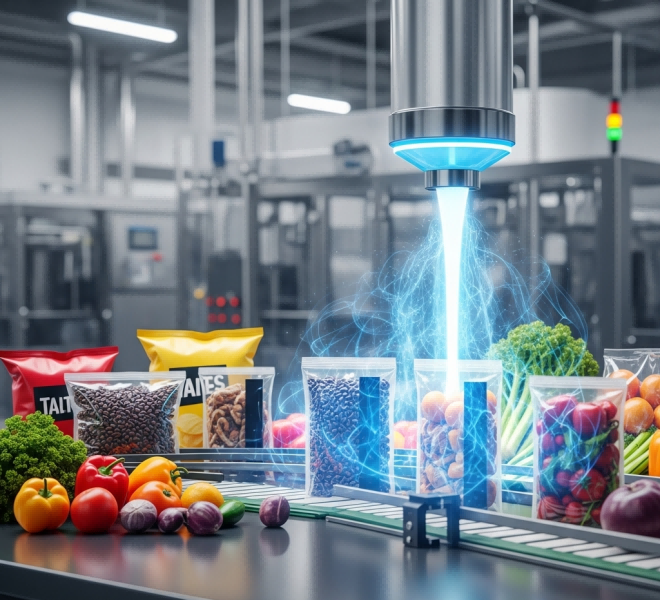
Key Applications & Technical Details
·Modified Atmosphere Packaging (MAP):
This is the most widespread application. Food-grade nitrogen (typically 99.0% to 99.9% pure), often mixed with carbon dioxide, is used to displace oxygen inside packages (like bags or trays). This achieves three goals: 1) Inhibits Aerobic Microbes: Significantly slows the growth of bacteria and mold. 2) Delays Oxidation: Prevents the rancidity of fats (in nuts, chips), color degradation (in meats), and the loss of vitamins. 3) Provides Physical Protection: Acts as a cushioning gas to protect fragile products from being crushed.
·Bulk Material Blanketing:
The headspace in large storage tanks for liquids like edible oils, wine, or juices is covered with a nitrogen "blanket." This isolates the product from ambient air, preventing oxidation during long-term storage.
·Processing Applications:
During the mixing, blending, or bottling of beverages, nitrogen is used for "agitation" or "sparging" to remove dissolved oxygen from the liquid. This improves the product's shelf-life stability right from the source.
Key Technical Considerations for Food-Grade Nitrogen Systems
When selecting a PSA nitrogen system for the food and beverage industry, decision-makers must focus on two paramount themes: absolute "Safety & Compliance" and long-term "Economic Benefits." This is not just about production efficiency; it directly impacts consumer health and brand reputation.
1. Safety & Compliance: Building a Contamination-Free Gas Supply Chain
"Food-grade" nitrogen implies strict control over the entire gas production chain. A top-tier solution must ensure no contaminants are introduced at any stage. Key technical control points include:
·Source Control - Oil-Free Air Compressor: It is essential to use an oil-free air compressor as the source. This fundamentally eliminates the risk of oil vapor and aerosols contaminating the compressed air, serving as the first and most critical defense for the final gas purity.
·Process Control - Multi-Stage Filtration: Before the air enters the core separation unit, it must pass through a multi-stage, high-precision filtration and drying system. This should include dust removal, water removal, oil removal, and sterile filtration to ensure the absolute cleanliness of the feed air.
·Regulatory Compliance: The entire system, including all components in contact with the gas, should be designed to comply with international food safety standards, such as FDA (U.S. Food and Drug Administration) regulations and EU food contact material directives.
2. Economic Benefits: Reducing the Cost per Cubic Meter
For large-scale food producers, gas cost is a critical variable affecting the bottom line. The value of an efficient nitrogen system is measured by its lower "Total Cost of Ownership." This depends not just on the initial purchase price, but on its long-term operational energy efficiency.
A superior system, through the use of higher-performance core adsorbent materials (CMS) and an optimized pressure swing adsorption cycle, can produce nitrogen with a lower "air factor." This means the electricity cost to produce each cubic meter of food-grade nitrogen is lower, which translates into significant operational savings that accumulate day after day.